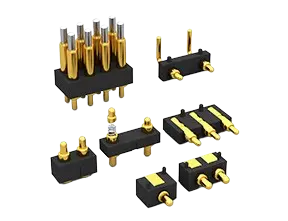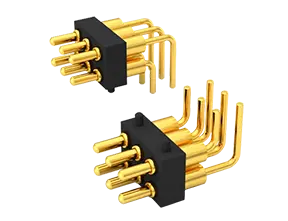In electronic engineering, connectors are important components used to connect two or more electronic parts or systems. The male pogo pin and female pogo pin are the two main parts of the connector, and distinguishing between them is crucial for correctly connecting circuits. The male pogo pin (sometimes called a plug) and the female pogo pin (also known as a socket) are two critical connecting elements, each with its unique role and application scenarios.
The primary function of the male pogo pin is to act as the central conductor, achieving connection with other devices or circuit boards through its protruding solid pin. It typically has excellent conductivity and mechanical strength, capable of maintaining a stable connection in complex electrical environments. The female pogo pin, on the other hand, is designed with a central conductor that has a drilled hole to receive the pin of the male pogo pin. With its flexible pogo structure, the female pogo pin can provide a reliable electrical connection and has some tolerance to accommodate slight misalignments of the pin.
The structure of the male pogo pin is relatively simple, usually consisting of a solid pin and surrounding insulation material. The pin part is specially treated to ensure good conductivity and wear resistance. The structure of the female pogo pin is more complex, including a central conductor with a drilled hole, a pogo mechanism, and surrounding insulation material. The design of the pogo mechanism allows the female pogo pin to accommodate pins of different sizes and maintain a stable connection.
Male and female pogo pins have a wide range of applications in the electronics field. Male pogo pins are often used as connecting elements that need to be inserted into other devices or circuit boards, such as plugs and connectors. Female pogo pins are frequently used to receive those plugs, acting as sockets and receptacles. In specific application scenarios like communication devices, computer hardware, automotive electronics, and other fields, the combination of male and female pogo pins can achieve efficient electrical connections. Additionally, in high-tech fields like medical equipment and aerospace, the high reliability and stability of male and female pogo pins are widely applied.
Due to the significant differences in function, structural features, and applications between male and female pogo pins, choosing the appropriate connecting elements based on specific connection needs is essential to ensure the stability and reliability of electrical connections. If needed, choose Rtench as your reliable pogo pin supplier. Be free to contact us!
Pogo Pin Connectors Related News

